Sustaining Australia’s economy with a vibrant urban development industry – A Message from Simon Basheer, UDIA National President.
Australia’s urban development industry recognises the enormous economic effects posed by the spread of COVID-19. Every aspect of the economy is being impacted, and it is imperative the nation unites in an effort to limit the economic damage, as well as ensure the recovery is as swift and vibrant as possible.
The nation’s residential development sector is well placed to play a vital role in these endeavours – and its ongoing health and vitality needs to be front-and-centre in the thinking of policy makers right now.
Construction generates 7.5 percent of the nation’s economic output according to independent research undertaken by EY on behalf of the Urban Development Institute of Australia (UDIA) – along with 750,000 direct and indirect jobs.
The multiplier effect for demand and services generated across supply chains is crucial for domestic consumption and economic growth with $122 billion in direct and indirect output across the economy.
Prior to the arrival of COVID-19, there were some reasons for optimism following a period of downturn in the housing sector – with lending beginning to flow, house prices in most capital cities on an upward trajectory and actions by governments and regulators beginning to take hold. However, there were also some warning signs beginning to show, with development pipelines and approvals starting to thin, and falling out of sync with population growth and buyer demand.
What’s clear is that the residential construction sector can move quickly to respond to demand, if the industry is sustained with the right policy decisions through the COVID-19 crisis. We are well-capitalised, innovative, resourceful and central to Australia’s economic health.
Our industry’s success will be at the epicentre of Australia’s ability to manage the downturn, and swiftly return to business. Other industries will seek a hand-out; we simply want to be unshackled from excessive red tape that stalls projects and ultimately hurts homebuyers.
Surgical policy initiatives that free industry from impediments that usually stall approvals and project commencements have the potential to unleash construction, jobs, provide employment and generate economic activity, will underwrite the ‘Bounce Back’ at a time the nation needs it most.
Our Submission outlines six key focal areas that represent a low barrier-to-entry for government because they do not require major legislative, administrative or even financial action. Rather, they can be instituted quickly and in doing so, act to provide impetus to a crucial sector in the economy now.
They are scalable, use existing administrative mechanisms, proportionate and can be easily mobilised. They are also placed in the context of medium to long-term policy goals that the industry seeks to work with governments to achieve. Acting now on the short term goals will establish a clear reform agenda for governments that can cut red tape and foster productivity.
In the meantime, we look forward to working with governments to continue to keep development, construction and building activity open and operational as long as it is safe to do so, particularly given the industry is highly-versed in health and safety and has characteristics which make ongoing work compatible with many of the current containment measures.

